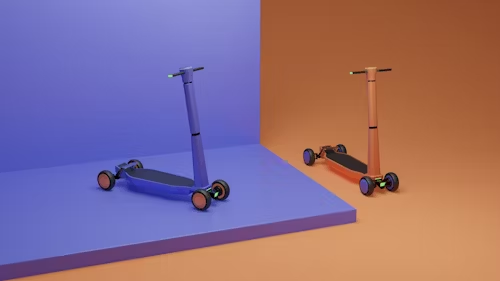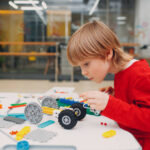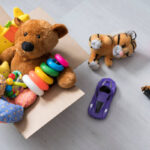Beyond The Playground: Rethinking Movement In Early Childhood
Gross motor skill development in preschool has long been associated with running, jumping, and climbing—gross motor skills are the cornerstone of a child’s physical development, but what if we reimagined this important growth period in a more focused and purposeful way? These skills develop rapidly during the preschool years (typically ages 3 to 5), making this a critical time for developing physical dexterity. In addition to the physical benefits, gross motor play also promotes cognitive development, social interaction, and emotional well-being.
While focusing on the obvious physical benefits of movement, we also delve into how gross motor toys can help young children develop emotional resilience, sensory processing skills, and even early problem-solving skills. We’ll go beyond traditional advice and take a broader, science-based perspective on gross motor skill toys and the role they play in a child’s overall development. We’ll also provide parents with practical tips for choosing toys that promote active play and healthy development.
Gross Motor Skills Are Important For Infant Development
Gross motor skills refer to the coordinated use of large muscle groups to move the whole body—used for walking, running, crawling, and activities that require a high level of coordination, such as climbing or balancing. These skills begin to develop in infancy and continue to improve during early childhood. These foundational abilities not only allow children to explore the world, but also lay the foundation for academic readiness and social-emotional stability. For preschoolers, gross motor skills help them perform more complex activities, which are essential for daily activities, sports, and even lay the foundation for fine motor skills.
A study published in the Journal of Pediatrics found that children who were regularly physically active showed better cognitive function, such as better focus, problem-solving, and executive function, highlighting the importance of gross motor skill development. Another study from the American Academy of Pediatrics emphasized that physical activity in early childhood contributes to overall health and academic readiness. By developing gross motor skills, parents can help their children lay a solid foundation for lifelong physical and mental health. Children who master these physical skills tend to be more confident and independent.
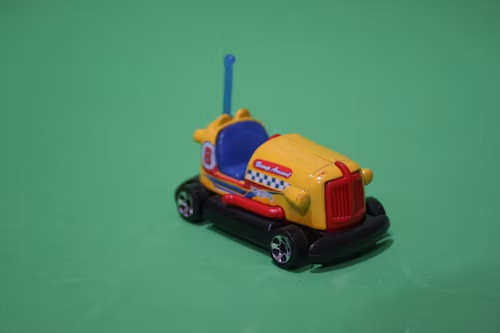
Gross Motor Play – An Important Component Of Well-rounded Development
Gross motor play isn’t just a way to keep kids active, it’s an important part of their overall development. The Centers for Disease Control and Prevention emphasizes that regular physical activity in early childhood supports healthy growth and development. By incorporating gross motor play into daily life, parents can support their children’s physical, mental, and social growth:
- Physical Development: Strengthens muscles, improves flexibility, enhances cardiovascular health, and reduces the risk of obesity and related health problems.
- Coordination and Balance: Helps children control their bodies and move safely around their environment, reducing the likelihood of falls and injuries.
- Cognitive Development: Stimulates neural connections, improves attention, memory, and problem-solving skills, and studies show a link between physical activity and brain development.
- Social Skills: Encourages children to interact with peers through group play, teaching cooperation, sharing, and communication skills.
- Emotional Health: Provides an outlet for releasing energy, reduces stress, and promotes positive emotions, which in turn increases confidence.
When children play with gross motor toys, they’re not just moving—they’re synchronizing their brain hemispheres, developing spatial awareness, and learning to manage emotions through physical regulation.
Exploratory Top Gross Motor Toys for Toddlers (1-3 Years)
Toddlers between 1 and 3 years old are in the exploratory phase of their gross motor development. They are learning to walk, climb, and balance – so gross motor skills toys should focus on encouraging exploration and basic movements while being safe and engaging, helping children master basic movements while stimulating joy.
| Toy | Description | Developmental Benefits |
|---|---|---|
| Balance Bikes | Pedal-less bikes that toddlers propel with their feet. | Improves balance, steering, and leg strength. |
| Ride-on Toys | Cars, animals, or other themed toys for scooting around. | Enhances leg strength, coordination, and motor planning. |
| Push and Pull Toys | Toys like wagons or lawnmowers that toddlers push or pull while walking. | Encourages walking and builds leg and core strength. |
| Soft Balls | Lightweight balls for rolling, throwing, or catching. | Develops hand-eye coordination and arm strength. |
| Tunnels/Play Tents | Collapsible tunnels or tents for crawling and exploration. | Promotes spatial awareness and motor planning. |
| Activity Cubes | Multi-functional toys with climbing, spinning, or sliding features. | Encourages climbing, balance, and coordination. |
Pro Tip: These toys are designed to fit the needs of children of different ages, while building foundational gross motor skills while keeping play fun and engaging. Choose toys with a variety of textures and colors—sensory input can enhance motor planning abilities.
Best Gross Motor Toys for Toddlers (Ages 3-5): Building Complexity
As children enter the preschool stage (3-5 years), they transition from basic movements to more complex sequences of movements. Their sense of balance, timing, and strength are developing, and they can play with more complex toys, so this age is the best age to introduce gross motor skills toys that challenge agility and endurance.
| Toy | Description | Developmental Benefits |
|---|---|---|
| Tricycles | Three-wheeled bikes with pedals for independent riding. | Develops pedaling skills, balance, and coordination. |
| Climbing Structures | Playhouses or jungle gyms with ladders, slides, or climbing walls. | Builds upper body strength, confidence, and agility. |
| Sports Equipment | Small basketball hoops, soccer balls, or tee-ball sets. | Improves hand-eye coordination and introduces sports. |
| Jump Ropes | Lightweight ropes for jumping games. | Enhances rhythm, timing, and cardiovascular fitness. |
| Hula Hoops | Plastic hoops for twirling or use in games. | Improves balance, core strength, and coordination. |
| Obstacle Course Sets | Kits with cones, tunnels, and hurdles for indoor or outdoor use. | Encourages agility, speed, and problem-solving. |
| Bean Bag Toss Games | Sets with targets for tossing bean bags. | Develops aiming skills and hand-eye coordination. |
Children who participate in a variety of gross motor activities show more significant gains in academic readiness than those who play in a limited physical activity setting, according to a 2020 study in Developmental Medicine & Child Neurology. These toys encourage more advanced motor and social play, preparing preschoolers for structured activities like sports or group play.
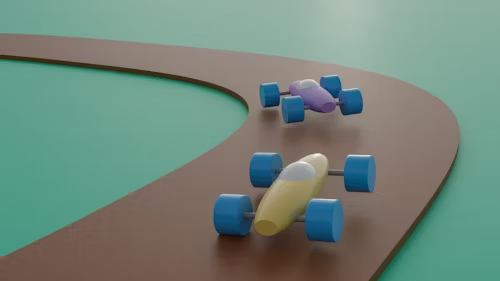
Indoor Gross Motor Activities For Preschoolers: That Work
Indoor gross motor activities are essential for families with limited outdoor space or inclement weather. Not all gross motor development requires a backyard. Here are some effective indoor toys and activities that work just as well or better than indoor gross motor skills toys when space and weather are limited. These activities ensure preschoolers stay active even when outdoor play isn’t an option.
- Mini Trampolines: Compact trampolines provide a safe way to jump and burn energy, helping improve cardiovascular health and balance.
- Balance Boards: Wobble boards made of wood or plastic help children develop core strength and stability.
- Balloon Games: Bouncing balloons in the air, such as the Keepy Uppy that bounces on X-posts (gross motor toys in the kids’ room), promotes movement and coordination in a small space.
- Indoor Obstacle Courses: Using household items like pillows, chairs, or a foldable tunnel, create a fun obstacle course, which is equivalent to a simple activity toy that can stimulate intelligence and cognitive skills in play, cultivate agility and problem-solving skills.
Tip: Rotate indoor toys every few weeks to prevent habitual movements and maintain motivation.
Promotes Physical Health and Overall Development – Gross Motor Toys Work
Gross motor toys are a powerful tool for promoting physical health in young children. The American Heart Association recommends that children aged 3-5 years old get at least 60 minutes of moderate to vigorous physical activity every day. Gross motor toys can help achieve this goal by turning exercise into games and cultivating a lifelong love of physical activity. In addition, a study in the Journal of Pediatrics showed that physical activity in early childhood contributes to long-term health, including reducing the risk of obesity and promoting motor skill development (physical exercise and cognitive function). Gross motor toys not only help children “de-stress”, but also lay the foundation for lifelong physical literacy and health awareness.
- Strengthen muscle strength: Activities such as climbing or stepping can increase the strength of large muscle groups, improve endurance and explosive power, and active movement can strengthen the musculoskeletal system.
- Improve cardiovascular health: Running, jumping, or playing on fitness equipment can increase heart rate and benefit heart health. Many gross motor toys can stimulate the vestibular and proprioceptive systems, which is crucial for children with sensory integration disorders.
- Improve flexibility: Toys such as hula hoops or balance boards can promote stretching and bending, improve flexibility, improve posture, and prevent future body posture problems.
- Improve coordination: Throwing, catching, and balancing activities can improve motor skills and spatial awareness.
Research in the American Journal of Occupational Therapy found that targeted gross motor interventions can improve balance and body awareness in preschoolers with sensory integration disorders.
Gross Motor Toy Selection Tips & Expanding Ideas
Whether you’re a parent, educator, or therapist, choosing the best gross motor toys for young children involves considering maximizing your child’s development and ensuring safe, enjoyable play.
- Age-appropriateness: Choose toys that match your child’s developmental stage to prevent frustration or injury, and choose toys that are appropriate for children of different ability levels.
- Safety: Choose toys that have no sharp edges, are made of non-toxic materials, and are sturdy in construction to ensure safe play.
- Space availability: Consider your living space—small toys like mini trampolines or balloon games are suitable for small homes, while climbing frames are suitable for larger spaces.
- Versatility: Choose toys that are versatile or can grow with your child, with toys that allow for climbing, crawling, and balance training being more valuable.
- Engagement: Choose toys that capture your child’s interest and encourage continued active play.
With these factors in mind, parents can choose toys that promote gross motor development while also meeting the needs and lifestyle of their family. To make gross motor play more fun, parents can add some creative activities to extend the use of toys:
- Themed play days: Organize play days with themes such as “sports day” or “obstacle challenge” to encourage children’s social interaction and teamwork.
- Story play: Create stories around toys, such as using climbing frames to pretend a pirate ship or using tunnels to pretend a secret cave to stimulate children’s imagination.
- Family challenges: Involve the whole family in games such as bean bag tossing or hula hoop competitions to enhance parent-child bonding and promote children’s active play.
These ideas not only enhance the fun of play, but also promote social and cognitive development, making gross motor play a well-rounded experience.
Call to Action: Encourage Gross Motor Development, But Don’t Overstructure It
In a culture dominated by screens and sedentary habits, promoting healthy motor development through purposeful play is more important than ever. Gross motor play is an important part of preschooler development, providing physical, cognitive and social benefits that lay the foundation for a healthy, active life. By providing age-appropriate gross motor toys, parents can encourage their children to explore, move and grow in fun and engaging ways.
The right tools can create a world where movement becomes second nature – filled with joy, empowerment and a strong drive for development. All while fostering a love of physical activity that will last a lifetime. Every movement counts – and every toy helps your child take a step toward a stronger, more capable body. Exposing children to meaningful movement not only builds stronger legs, but also gives them more confidence to explore the world.
